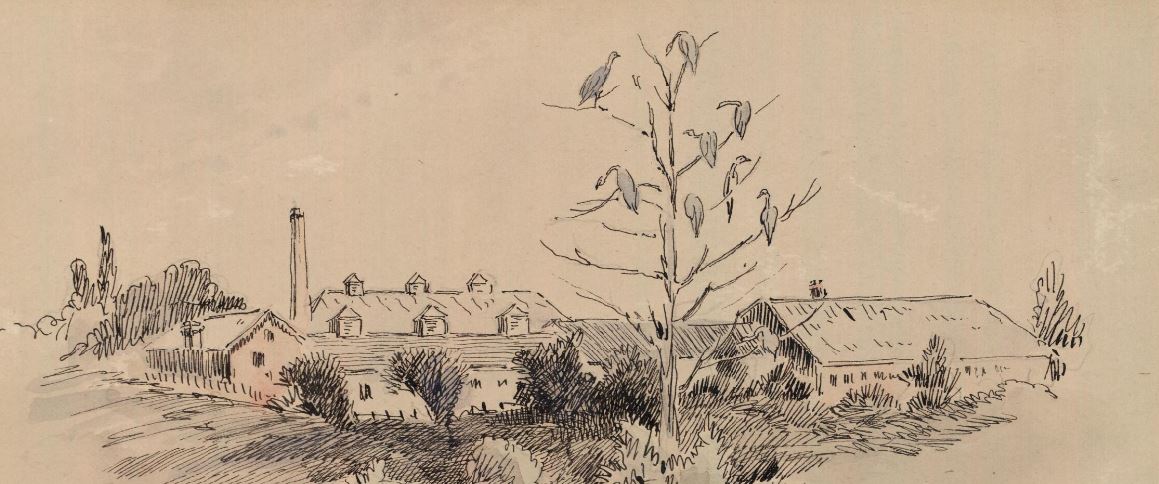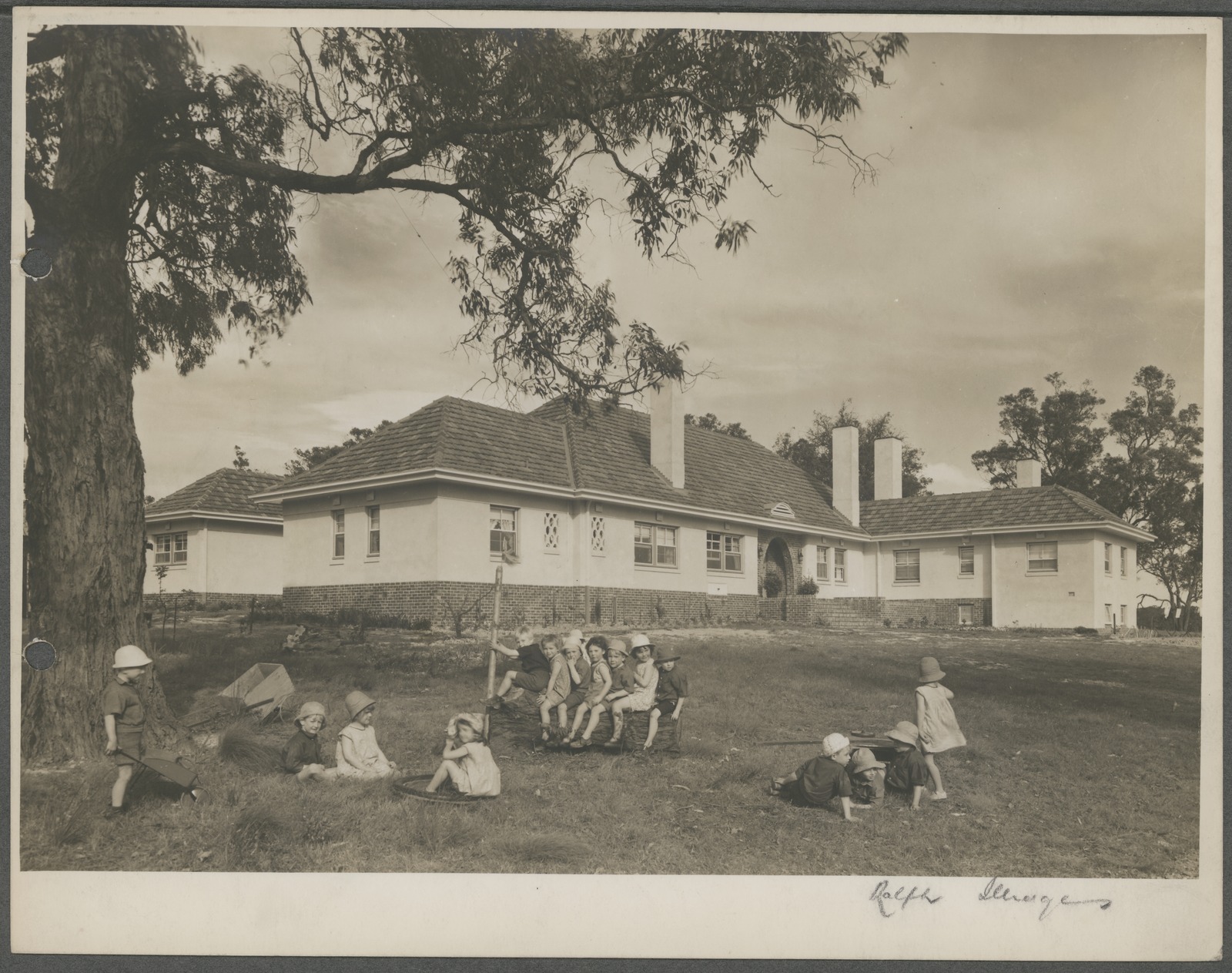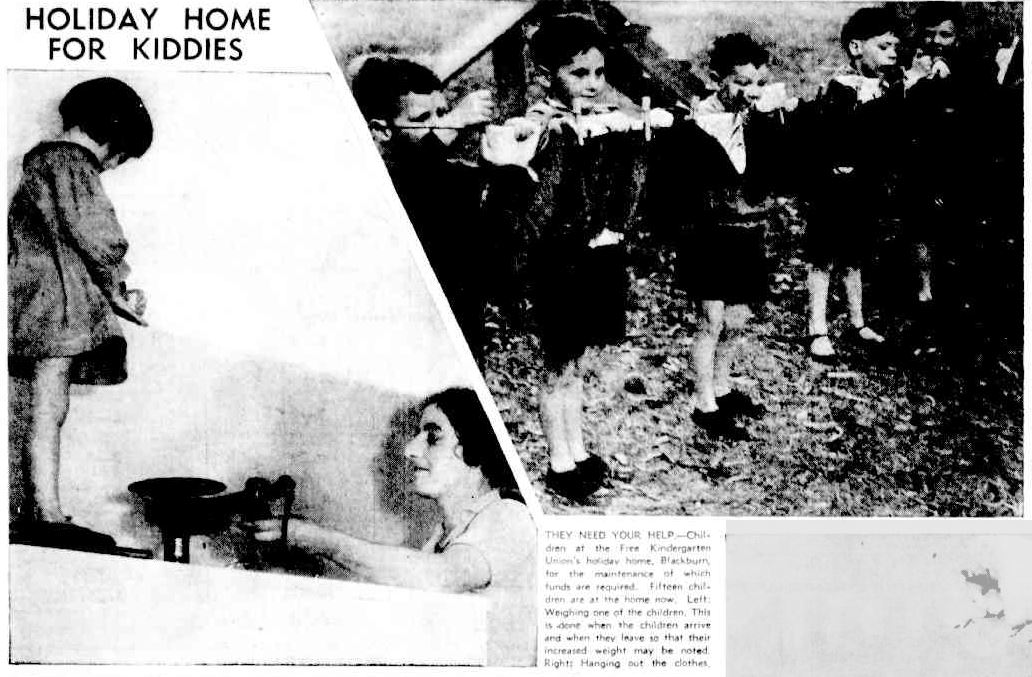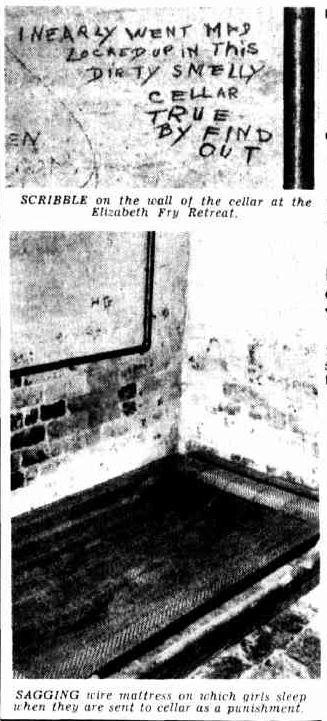

This is a copy of a drawing showing the Immigrants’ Home in Melbourne, dated 1883.
Children’s Registry, Bendigo Industrial School (1868-1885) is a record created by the Sandhurst Industrial School which was within the grounds of the Bendigo Benevolent Asylum. It contains information about children admitted to the Industrial School, including their names, ID number, date of admission to the school, sex, date of birth, religion, term of commitment (length…
The Boys’ Farm School at the Macedon State Nursery was established around late 1882 or early 1883. Boys and young men from industrial schools or in boarding out placements were placed there to be trained in gardening skills. It closed around 1885. The Macedon State Nursery had been established in 1872, to provide trees to…
The Boys’ Farm School, Dookie opened in 1881. It provided training for boys from Victorian industrial schools and boarding out placements in farming. It closed in 1886 when a government agricultural college opened on the site. The 4800 acre property was in north-eastern Victoria, with “a short frontage to the Broken River on the south,…
The Royal Commission on Penal and Prison Discipline was appointed on 8 August 1870 to inquire into and report upon the condition of the penal and prison establishments and penal discipline within the Colony of Victoria. It was also tasked with inquiring into the working of the Neglected and Criminal Children’s Act 1864 and Victoria’s…

This is one of six images from the collection of the State Library of Victoria showing the Forest Hill Kindergarten Holiday Home. It would appear to show the new building, constructed in 1936 and officially opened in 1937.
The Warrawong Kindergarten for Emergency Care in Ringwood East began to provide temporary emergency care in the 1960s. Run by the Graduates Association of the Melbourne Kindergarten Teachers College, it started off as a holiday home for children attending kindergartens affiliated with the Free Kindergarten Union. Opening in 1937, it was a “sister” institution to…
The Kindergarten Training College was established in 1922. Previously, kindergarten teachers were trained by the Free Kindergarten Union, established in 1908. In 1964, the Kindergarten Teachers College became a separate entity from the Free Kindergarten Union. In 1973 it became the Institute of Early Childhood Development. Graduates of the Melbourne Kindergarten Teachers College ran two holiday…

This is a copy of an illustrated newspaper article from 1937 about the Free Kindergarten Union’s holiday home in Forest Hill. The Melbourne Herald published two photographs, one of a child being weighed and another of children hanging out washing. The caption reads: THEY NEED YOUR HELP. Children at the Free Kindergarten Union’s holiday home, Blackburn,…

This is a copy of photographs that were published in a newspaper article about Elizabeth Fry Retreat in October 1952, in which the matron of the institution described sending girls to be solitary confined in darkness in a cellar as punishment. The captions read: “Scribble on the wall of the cellar at Elizabeth Fry Retreat”…